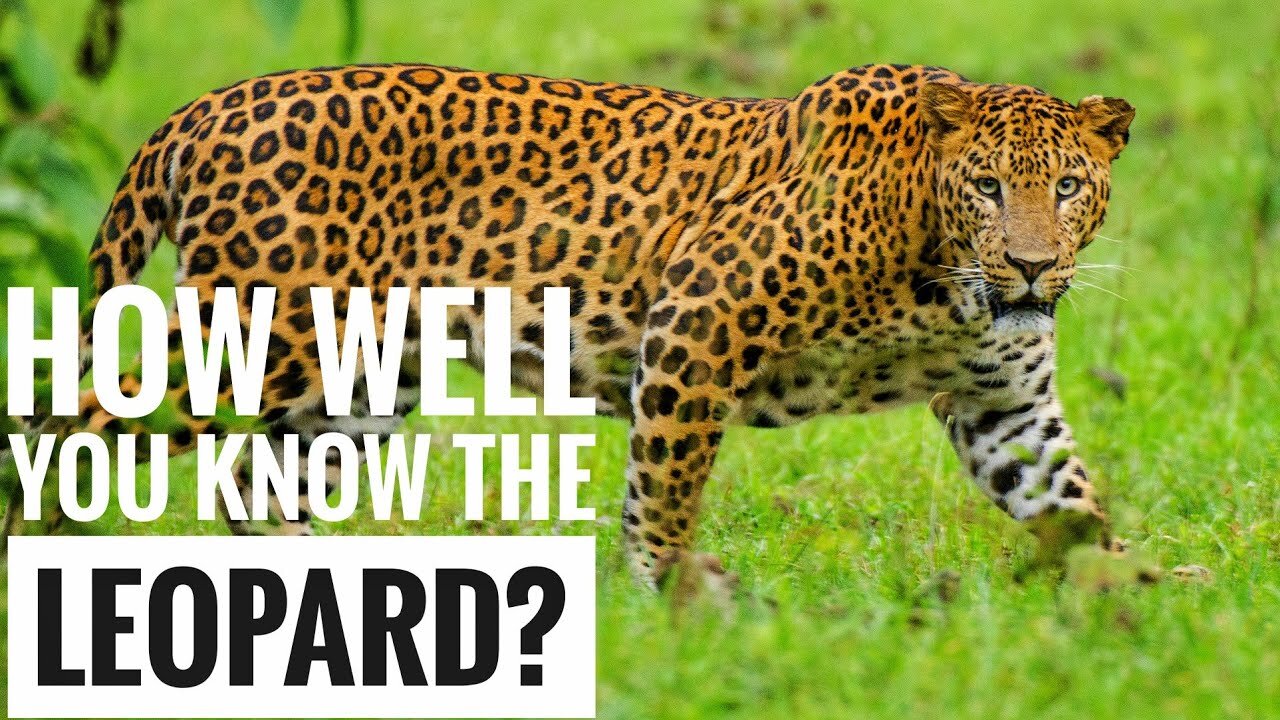Premium Only Content

Leopard || Description, Characteristics and Facts!
The leopard, scientifically known as Panthera pardus, is a majestic big cat renowned for its distinctive spotted coat and remarkable hunting prowess. Its sleek, muscular body and keen senses make it an apex predator in its natural habitat, which includes various regions across Africa and Asia.
#LeopardFacts #WildlifeWednesday #BigCats #AnimalFacts
Description:
Leopards typically have a golden-yellow fur coat covered in dark rosettes, which provide excellent camouflage in their forest and savannah habitats. These rosettes help them blend seamlessly into the dappled light and shadows of their surroundings, aiding in stealthy hunting. Some leopards, particularly those in dense forests, may exhibit a darker coat coloration, while those in arid environments may appear lighter in color.
Characteristics:
Agile and Stealthy: Leopards are incredibly agile climbers and skilled stalkers, capable of silently maneuvering through trees and dense vegetation to ambush their prey.
Powerful Predators: With muscular builds and sharp retractable claws, leopards can take down prey much larger than themselves, including antelopes, deer, and even young giraffes.
Solitary Nature: Unlike lions, leopards are solitary creatures, preferring to hunt and live alone, except during mating season or when a mother is raising her cubs.
Territorial Behavior: Leopards fiercely defend their territories, marking boundaries with scent markings and vocalizations to deter intruders.
Versatile Diet: Known for their adaptability, leopards have a diverse diet and are opportunistic hunters, consuming anything from small rodents and birds to larger mammals.
Fascinating Facts:
Leopards are superb swimmers and are known to hunt fish and aquatic prey in addition to terrestrial animals.
Their ability to carry prey weighing up to three times their body weight up into the trees helps protect their meals from scavengers like hyenas and lions.
Leopards have a wide geographic range and can inhabit diverse ecosystems, from rainforests and deserts to mountainous terrain.
Despite being powerful predators, leopards face threats from habitat loss, human-wildlife conflict, and illegal wildlife trade, leading to population declines in many areas. Conservation efforts are crucial for ensuring their survival in the wild.
#LeopardConservation #ProtectWildlife #NaturePhotography
-
 DVR
DVR
Nikko Ortiz
39 minutes agoLive - Reaction Time, News, Politics, and More!
-
 1:02:26
1:02:26
VINCE
2 hours agoTragedy In Minneapolis | Episode 113 - 08/28/25
65.3K108 -
 LIVE
LIVE
Reidboyy
33 minutes agoHow To Make $$$ in Delta Force Console Operations!
56 watching -
 LIVE
LIVE
JuicyJohns
3 hours ago $0.26 earned🟢#1 REBIRTH PLAYER 10.2+ KD🟢
59 watching -
 LIVE
LIVE
Major League Fishing
6 days agoLIVE! - Fishing Clash Team Series: Challenge Cup - Day 5
141 watching -
 LIVE
LIVE
LFA TV
4 hours agoLFA TV ALL DAY STREAM - THURSDAY 8/28/25
5,026 watching -
 LIVE
LIVE
Total Horse Channel
14 hours ago2025 URCHA Futurity | Derby & Horse Show | Thursday
103 watching -
 LIVE
LIVE
The Big Mig™
1 hour agoThe War Powers Resolution w/ David Clements
5,160 watching -
 LIVE
LIVE
Badlands Media
7 hours agoBadlands Daily: August 28, 2025
4,171 watching -
 1:43:15
1:43:15
Dear America
2 hours agoTrans Violence Against Christianity MUST BE STOPPED!!
87.1K81